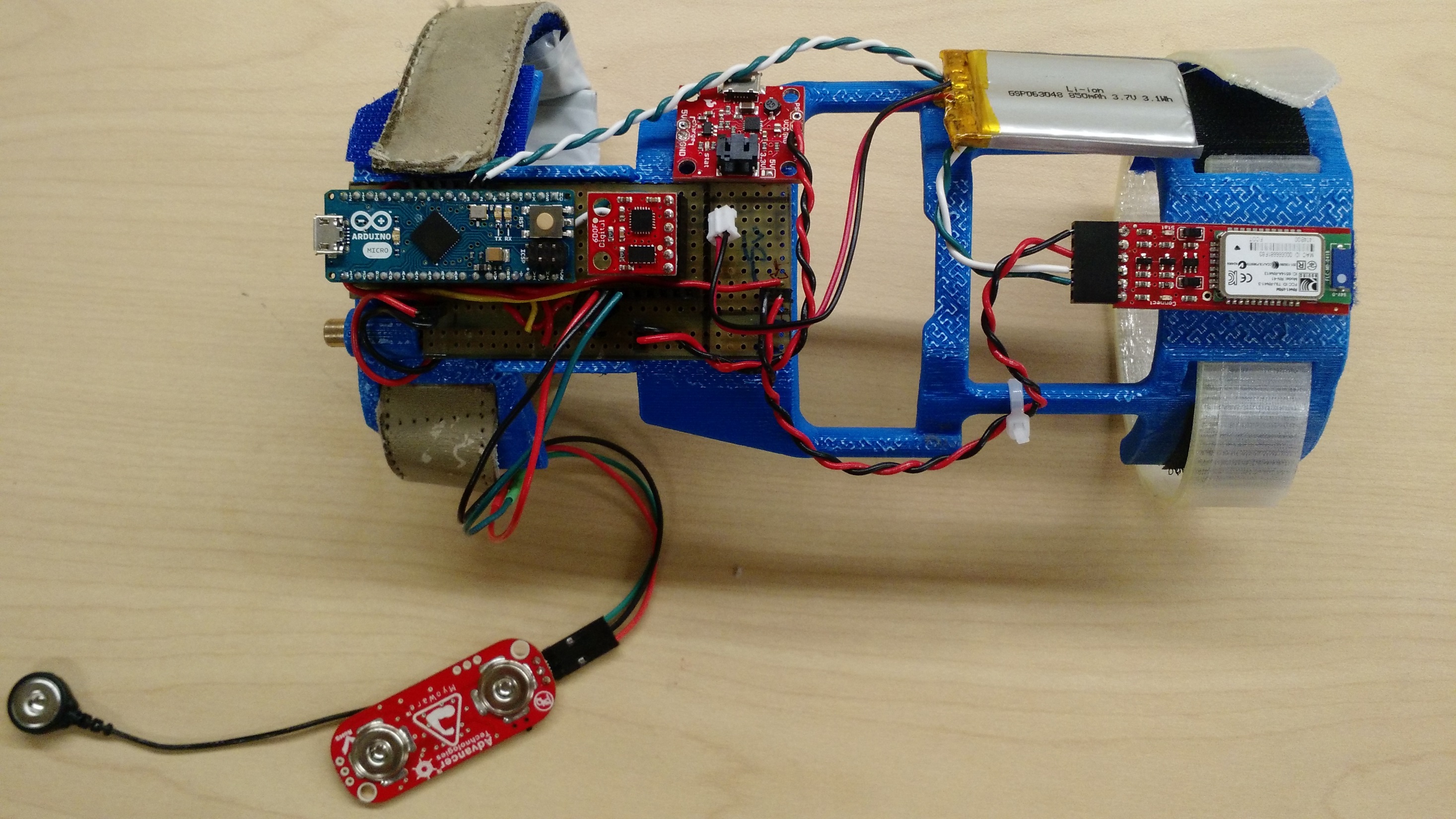Wearable Technologies
Wrist Orthotics

Individuals with a cervical spinal cord injury have limited mobility in their arms due to weakness of the muscles.
In our lab, we are designing a low cost wrist orthotic that uses gestures to perform various activities of daily life such as opening a door, swiping a credit card.
Related papers:
- Suresh, S., Manda,S., Marrero, C., Jacob L., Duerstock, B. (2017, July)."Multi-functional Wrist Orthotic with Universal Gesture Recognition System". RESNA 2017 Proceedings.
- Suresh, S., Chiquito, D.F.M , Manda,S., Jacob L., Duerstock, B. (2016, July)."Motor-Activated Multi-Functional Wrist Orthotic to Assist Individuals with Cervical Spinal Cord Injuries with Activities of Daily Living". RESNA/NCART 2016 Proceedings.
Physiological Telemetry

We are currently developing a physiological-based telemetry system to detect secondary health complications associated with spinal cord injury, including autonomic dysreflexia and temperature dysregulation.
The goal of this research is to train the user to predict the onset of these conditions before they become medically detrimental and to remotely alert caregivers when they occur wherever the user is located.
Related papers:
- Suresh, S; Raftery, B.; Duerstock, B. (2017). Detection of Autonomic Dysreflexia in persons with Cervical Spinal Cord Injuries through a Support Vector Machine., in: Rehabilitation Engineers Society of North America (ed). RESNA 2017. New Orleans.
- Suresh, S., Duerstock, H., & Duerstock, B. (2015, November). "Skin Resistance as a Physiological Indicator for Quadriplegics with Spinal Cord Injuries During Activities of Daily Living". In International Conference on Smart Health (pp. 157-168). Springer International Publishing.
